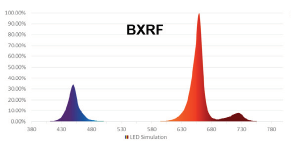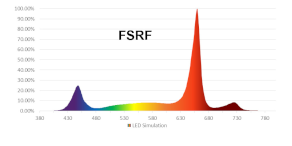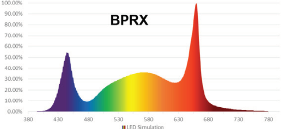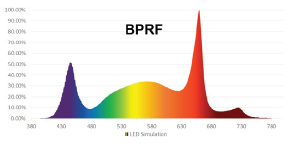When planning an LED lighting project, one of the most important factors to consider is light coverage. This article will explain how to use the "foot-candle" measurement to determine how much light your project will require.
What is a foot candle?
A foot candle is a measure of luminescence that quantifies the amount of light reaching a specific surface area. A foot candle measures the lumens per square foot of a illuminate. Specifically, a 1-lumen light that lights up a 1x1 foot area at a distance of one foot is said to produce 1 foot candle. The foot candle is the most common measurement used by professionals to determine appropriate light levels in work spaces, retail venues, buildings and outdoor spaces.
How many foot candles do you need?
The exact amount of foot candles needed can be found with a light meter. For commercial and industrial applications, it might be smart to invest in a light meter or hire an expert to make this determination for you. For homeowners or small business, you can make foot candle estimates based on the chart below.
- Offices and Indoor Spaces: 20-50 foot candles
- Warehouses: 10-50 foot candles (more needed for more detailed activity like ready labels)
- Machine Shops: 50-100 foot candles
- Outdoor Spaces: 20-50 foot candles
- Painting and Color Matching: 100-150 foot candles (locations where precise color work is done require more lights)
For more information on choosing the correct LED light for your application, contact one of our experts at 877-533-5554
Security lighting is the number one step homeowners can take to protect their property from unwanted intruders. Statistics show that burglars bypass targets that are difficult to access without being noticed. A well-designed security lighting system can make would-be robbers think again before approaching your property. This guide will show you how to create an effective, low-cost LED security lighting system for your home or business.
- Use many smaller lights rather than fewer, more powerful lights
Large, powerful flood lights are good for open spaces, but can sometimes leave shadows if there are obstacles on your property like buildings and trees. Using a combination of LED flood lights, will reduce shadows and blind spots that intruders can use to hide.
- Keep lights high and out of reach
Its important to make it difficult for burglars to tamper with your security system. Many thieves will plan heists for several weeks. Even the best security lighting can be rendered useless if an intruder is able to disable the system. Keeping lights high and out of reach will make it difficult for your system to be tampered with. Placing lights high will also soften the light for a better look and increased coverage.
- Use Motion Detector Lights
Motion detector lights are an effective way to scare off intruders. Burglars will be on edge during a robbery and having a light come on as they walk by is often times enough to scare them away. A good combination of LED spotlights and motion detector lights will work to keep intruders off of your property and scare away those who dare enter.
- Keep Front and Back Doors Well-Lit
Most criminals seek out targets that can be accessed at night without being seen. Ensuring excellent light coverage at all entrances and exits will deter criminals from planning a robbery at your property.
Click here to view our selection of high quality LED security flood lights and wall packs at excellent prices
An LED power supply, sometimes called a driver or transformer, is an important piece of your LED lighting system. The power supply provides the correct voltage to your light and converts the current from AC to DC. Choosing the correct power supply is key to ensuring your LED light delivers excellent performance and a long life.
-
Do you need an LED power supply?
Some bulbs come with a power supply built in and will not require an external driver. Most LED strip lights, modules and ribbon lights will require you to purchase a separate driver. If you are unsure, contact one of our experts at 1-877-533-5554.
-
Voltage
Choosing the correct voltage for your power supply is vital to your LED's proper performance. Using an incorrect voltage can cause serious damage to your lights. Your light's specification sheet will list a voltage (12V or 24V). Pick a driver with the same voltage as what is listed.
-
Dimming or Non-Dimming?
A dimmable driver will be required if you are planning to dim your light from a wall-mounted switch. You won't need a dimmable power supply if you are using a more complex remote control, DMX system, or pwm dimming on the low voltage side.
-
Waterproof?
Depending on your application, you may want to consider a water resistant power supply. When your LED light will be operated outdoors or in an area where it will be exposed to dust and moisture. Power supplies that are water resistant come with either an IP66 or IP67 outdoor rating. It is important to note that no power supply is submersible.
-
Size or Wattage
You want your power supply to be able to handle a wattage at least 15% greater than that of your light. To find the wattage you need, multiply your LED light's wattage by 1.15. This will be the lowest size power supply that you will want to use for that light. A higher-watt power supply will also be appropriate for you, but do not go under this number.
-
Voltage Drop
When stringing together continuous runs of LED modules and ribbon lights, you must consider voltage drop over distance. Modules can only run in 50 ft intervals and ribbons in 30 ft intervals. To acheive longer length runs, run a new power feed from the driver to each run.
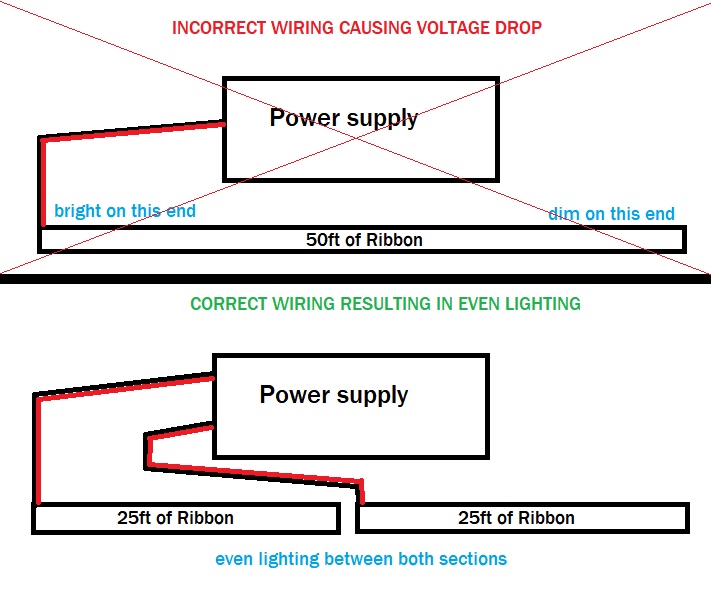
Click here to view our wide selection of high quality LED power supplies from top manufacturers
If you still have questions or are having trouble choosing a power supply, call us to speak with one of our experts at 877-533-5554
Whether you are upgrading from incandescent bulbs or replacing existing LEDs, it is important to choose the correct bulb for your application. Some of the specifications and terminology surrounding LED lights can be confusing. This article will focus on demystifying the terms "lumens" and "Kelvin temperatures". We'll explore what these terms mean and how different values will effect your LED bulb's performance.
In simple terms, a light's lumen value describes the brightness and the Kelvin temperature describes its color.
Lumens
A lumen (often denoted lm) is a measure of how much visible light is generated by a light source. A larger lumen figure means a brighter light. Both LEDs and traditional lights use lumens to quantify how much light they produce. You will notice that LEDs are able to produce more lumens at lower watts. When upgrading your traditional lights to LEDs, it is important to compare the lumens produced, not the wattage.
Below is a chart showing approximate wattage conversions for various light types based on lumens. Keep in mind that some lights are more efficient than others, so check the exact lumen output of the light you are buying to ensure a correct conversion.
|
Bulb Type
|
Lumens
|
| 220+ |
400+ |
700+ |
900+ |
1,300+ |
8,000+ |
16,000+ |
40,000+ |
| Standard |
25W |
40W |
60W |
75W |
100W |
- |
- |
- |
| Halogen |
18W |
28W |
42W |
53W |
70W |
120W |
- |
- |
| CFL |
6W |
9W |
12W |
15W |
20W |
100W |
- |
- |
| MH/HPS |
- |
- |
- |
- |
- |
250W |
400W |
1000W |
| LED |
4W |
6W |
10W |
13W |
18W |
60W |
120W |
400W |
Kelvin Temperature
The Kelvin temperature of a light represents the color that a bulb will produce. Generally, a light's Kelvin temperature will be fall somewhere between 2000K and 6500K. It's important to choose a proper temperature for the your LED bulb's application. Below is a chart showing the different Kelvin temperatures on the visible light spectrum.

Kelvin temperatures of 2000K-3000K produce a warm, calm, inviting light that is great for general indoor lighting in both homes and businesses. LED lights in the 3100K-4500K range can be described as "cool white". These are bright and vibrant lights that are perfect for workspaces like basements, factories and hospitals. Lights with Kelvin temperatures in the 4600K-6500K range produce a crisp color similar to that of daylight. These lights are best when maximum illumination is required like security lighting, display cases, warehouses and industrial areas.


 Kelvin temperatures of 2000K-3000K produce a warm, calm, inviting light that is great for general indoor lighting in both homes and businesses. LED lights in the 3100K-4500K range can be described as "cool white". These are bright and vibrant lights that are perfect for workspaces like basements, factories and hospitals. Lights with Kelvin temperatures in the 4600K-6500K range produce a crisp color similar to that of daylight. These lights are best when maximum illumination is required like security lighting, display cases, warehouses and industrial areas.
Kelvin temperatures of 2000K-3000K produce a warm, calm, inviting light that is great for general indoor lighting in both homes and businesses. LED lights in the 3100K-4500K range can be described as "cool white". These are bright and vibrant lights that are perfect for workspaces like basements, factories and hospitals. Lights with Kelvin temperatures in the 4600K-6500K range produce a crisp color similar to that of daylight. These lights are best when maximum illumination is required like security lighting, display cases, warehouses and industrial areas.
